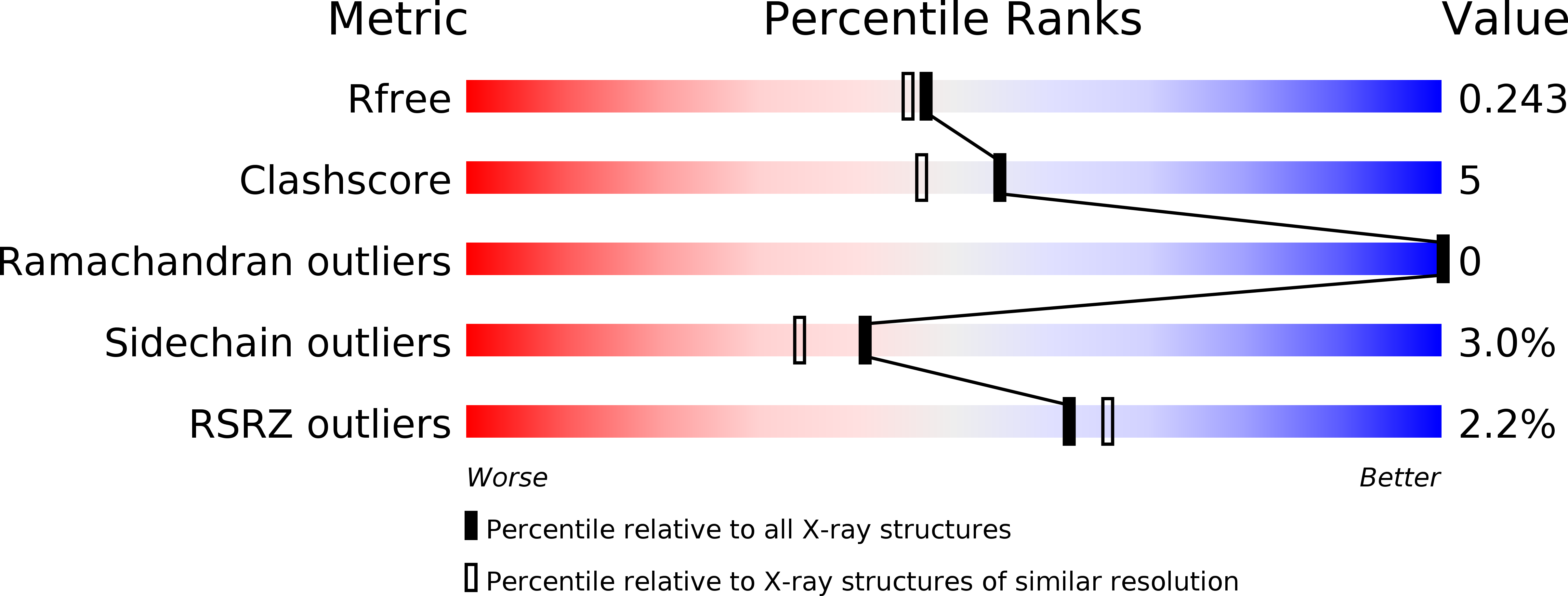
Deposition Date
2012-07-10
Release Date
2012-07-18
Last Version Date
2024-05-08
Entry Detail
PDB ID:
4B1F
Keywords:
Title:
Design of Inhibitors of Helicobacter pylori Glutamate Racemase as Selective Antibacterial Agents: Incorporation of Imidazoles onto a Core Pyrazolopyrimidinedione Scaffold to Improve Bioavailabilty
Biological Source:
Source Organism:
HELICOBACTER PYLORI (Taxon ID: 210)
Host Organism:
Method Details:
Experimental Method:
Resolution:
2.05 Å
R-Value Free:
0.23
R-Value Work:
0.18
R-Value Observed:
0.18
Space Group:
P 21 21 21


